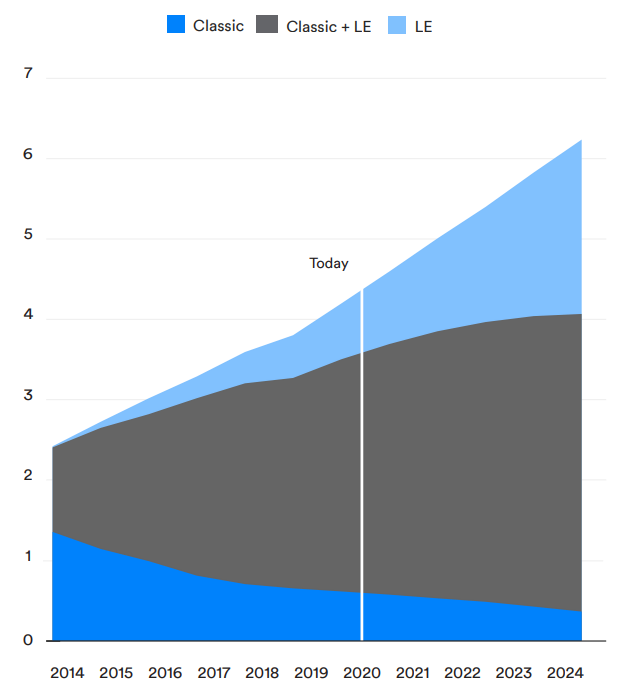Between The past and The future
Bluetooth, which is started off as a wireless, cable replacement technology, was developed by L. M. Ericsson in 1994. The developers of the Bluetooth decided to name it after King Harald “Bluetooth” Gormsson who was well known for two things: uniting Denmark and Norway in 958, and his dead tooth, which was a dark blue/gray color. In 1998, the Bluetooth Special Interest Group (SIG) was created by major companies comprising IBM, Nokia, Intel, Ericsson, and Toshiba. Bluetooth SIG continues to support the Bluetooth technology today. The SIG now has more than 36,000 companies since it was created.
The Bluetooth technology operates in the 2.4 GHz Industrial, Science, and Medical (ISM) band. In order to eliminate inference problems, Bluetooth uses Frequency-Hopping Spread Spectrum (FHSS) with a hopping rate of 1600 hops per second. Bluetooth technology supports multiple radio options which are Basic Rate/Enhanced Rate (BR/EDR) and Bluetooth Low Energy (BLE). The figure shows the Bluetooth device shipments by the radio version.

BR/EDR (Bluetooth Classic)
It is also called as Bluetooth Classic and uses Adaptive Frequency Hopping over 79 channels in the frequency band. BR/EDR uses 32 of these 79 channels for device discovery. It also includes multiple physical layer (PHY) options that support data rates from 1 Mb/s to 3 Mb/s. Different data rates come from different types of modulation. BR uses Gaussian Frequency Shift Keying and EDR uses Phase Shift Keying and two further variants: 8 Differential Phase Shift Keying (DPSK) and π/4-Differential Quadrature Phase Shift Keying (DQPSK).
Bluetooth Low Energy (BLE)
It is designed for low power operations and has a physical layer which is a reduced and optimized version of the Bluetooth Classic’s physical layer. While the BR/EDR hopes over 79 channels and implements discovery over 32 channels, BLE has 37 channels and executes discovery on 3 channels. In addition, BLE provides flexibility with multiple physical layer options, multiple power levels, and multiple network topologies, including point-to-point, broadcast, and mesh networking. The detailed differences between BLE and BR/EDR are shown below in Table 1.

References
- Zeadally, S.; Siddiqui, F.; Baig, Z. 25 Years of Bluetooth Technology. Future Internet 2019, 11, 194.
- Chadha, S.S., Singh, M., & Pardeshi, S.K. (2013). Bluetooth Technology: Principle, Applications and Current Status.
- https://www.bluetooth.com/about-us/
- https://www.bluetooth.com/learn-about-bluetooth/bluetooth-technology/radio-versions/
- https://www.bluetooth.com/bluetooth-resources/2020-bmu/?utm_campaign=bmu&utm_source=internal&utm_medium=blog&_content=bluetooth-emerging-market-forecasts-predict-continued-growth-through-2024
